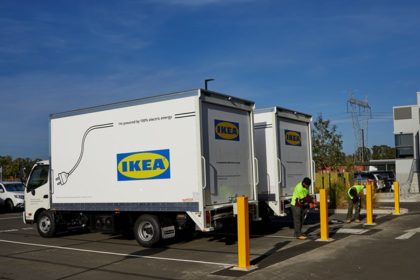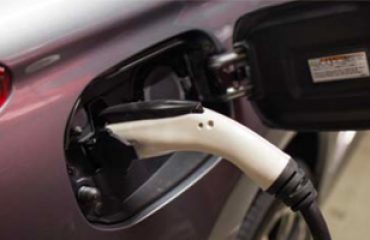
This is the second part of ATN’s look at two of Australia’s electric commercial truck early adopters’ experience of their experiment in support of Ikea using SEA Electric-powered light rigids. In it, Paul Kahlert of All Purpose Transport and Finn Dunleavy of ANC explain the driver’s view, how the managers went about it and how they view the future.
DRIVERS’ TAKE
What driver training was there?
PK: I covered this in the routing part of the response – the vehicle needs to be driven differently to an ICE truck to maximise the regenerative braking and battery performance. We now have a program where a new driver travels as the ‘offsider’ for deliveries where they can see the different driving style and discuss this with an experienced driver.
FD: ANC selected some of our best delivery teams to become our first EV [electric vehicle] drivers. They were accomplished professional drivers already, but there was a learning curve in transitioning to driving a commercial EV. SEA played a crucial role, by providing training days and putting technicians in the trucks with our teams for the first month out on the road.
What was their attitude before?
PK: When the vehicle appeared at our depot, the initial response from the drivers was curiosity – they all climbed in the cabin, walked around the vehicle and commented that it was ‘just a Hino’. There was some scepticism from the older drivers who were quick to criticise the short delivery range, even though their ICE vehicle drove a similar distance with their planned routes. Comments were made such as: “I hope you have got a long extension lead”/”Do you want me to bring my camping generator to put in the back.”
FD: Unsure but excited.
And after?
PK: Drivers who have driven the vehicle all comment on the lack of vibration, ability to hear road users and speed off the mark as what they like. Our business model is using owner-drivers, so there is now an emerging appetite on when they can have one of these vehicles. Each day, the vehicle loads out of the Ikea warehouse adjacent to ICE vehicles – from the drivers’ perspective it is ‘just another truck performing home deliveries’.
FD: Surprised and over the moon. The drivers were blown away by the differences between what they had known about driving a truck and what the new EV vehicle offered them.
How did they handle the increased acceleration of an EV? Any speeding tickets?
PK: The driving teams have learnt that if you ‘drive it like you stole it’ from the lights, you will quickly diminish the range of the vehicle. It has become a ‘badge of honour’ for the driver to do the most distance and return the vehicle with highest battery percentage left.
[As for speeding tickets] fortunately no. We have the vehicle branded with Ikea, so it is important that our driving teams are seen as responsible road users. This is company equipment and we have strong COR [Chain of Responsibility] processes that would not support speeding tickets.FD: The EV trucks are incredibly responsive and agile, but they are also an 8,000kg truck running at full capacity, and they are governed to 110km per hour. Sustainability is important, but the safety of our people and of the general public is even more important.
How did they adjust to the silence of an EV?
PK: An unintended consequence of the silence is that the vehicle primarily delivers in residential areas. Traditional ICE trucks have engine noise that can alert pedestrians, so I have jokingly suggested that we should play ‘Mr Whippy’ music from the truck to warn pedestrians about the vehicles’ presence.
FD: Delivery teams found the quieter cabin environment a fantastic change to their day. Most truck drivers are used to sitting above a hot, vibrating, noisy engine, but in the EVs that is all gone, and they found communicating with customers prior to arriving at the delivery much easier to do in the new, improved cabin space.
How about brake use?
PK: Drivers like the vehicle ‘automatically’ restricting itself on the downward ascent.
FD: Regenerative braking is something they had to learn, in order to improve the energy recovery back to the battery packs, but it was all handled in the first week of on-road training with the team from SEA.
What did they report to management during the project?
PK: As above.
FD: In the beginning, ‘range anxiety’ was a big issue for the drivers, but after around two weeks, when they were more comfortable, all the feedback was nothing but good. We did have the odd day where charging issues overnight contributed to the vehicle not having enough charge to do a full day’s work, however, that was not an issue with the trucks but rather the charging equipment.
Are there any quotes from them?
PK: As above.
FD: Feedback from some of our drivers: “The EV is quieter and smoother than the diesel trucks. They’re great for driving in the local area and city driving. The customers love the EVs! They have a very positive impact at the delivery point, with customers intrigued to know which company the truck belongs to and whose initiative it was. We confirm it’s a partnership between Ikea and ANC.”
“Three to four days a week, customers ask questions about the EV such as ‘how many kilometres can the truck travel?’ and ‘how do you feel about driving it?’ We’ve even had customers calling their friends while we were on-site to say they just had a delivery by an EV!”
CLICK HERE FOR FULL ARTICLE covering “Management Experience”, and the “Future of EV”
Article by Fullyloaded.com.au ATN, Rob McKay, 21st January 2021




